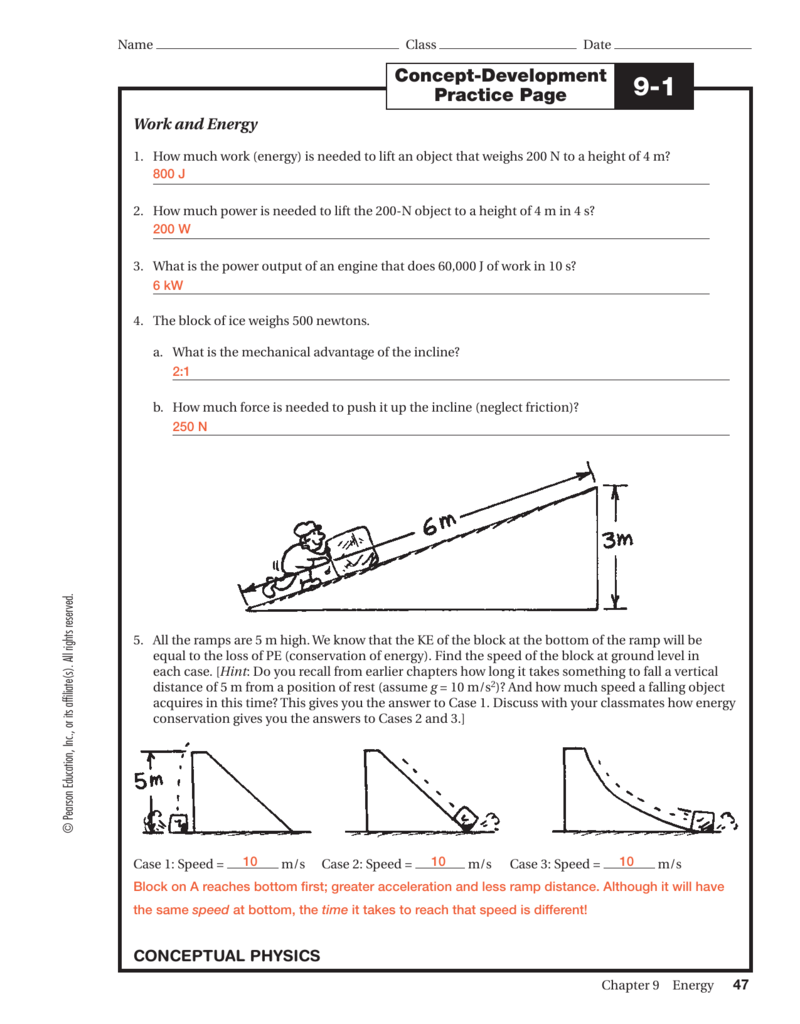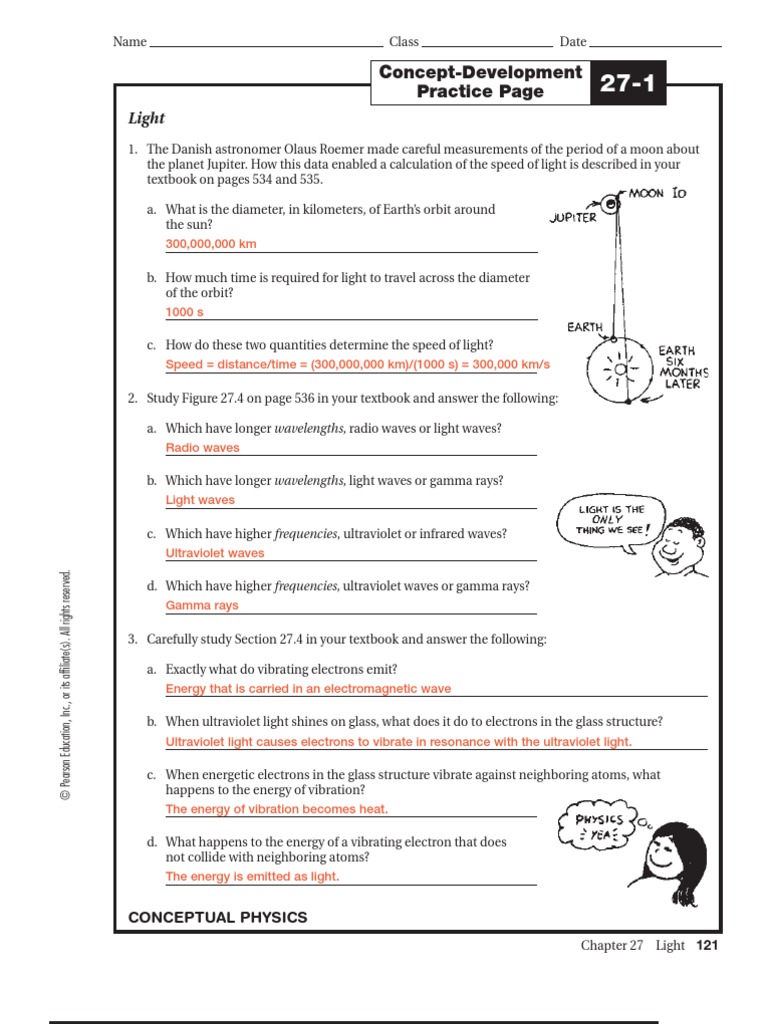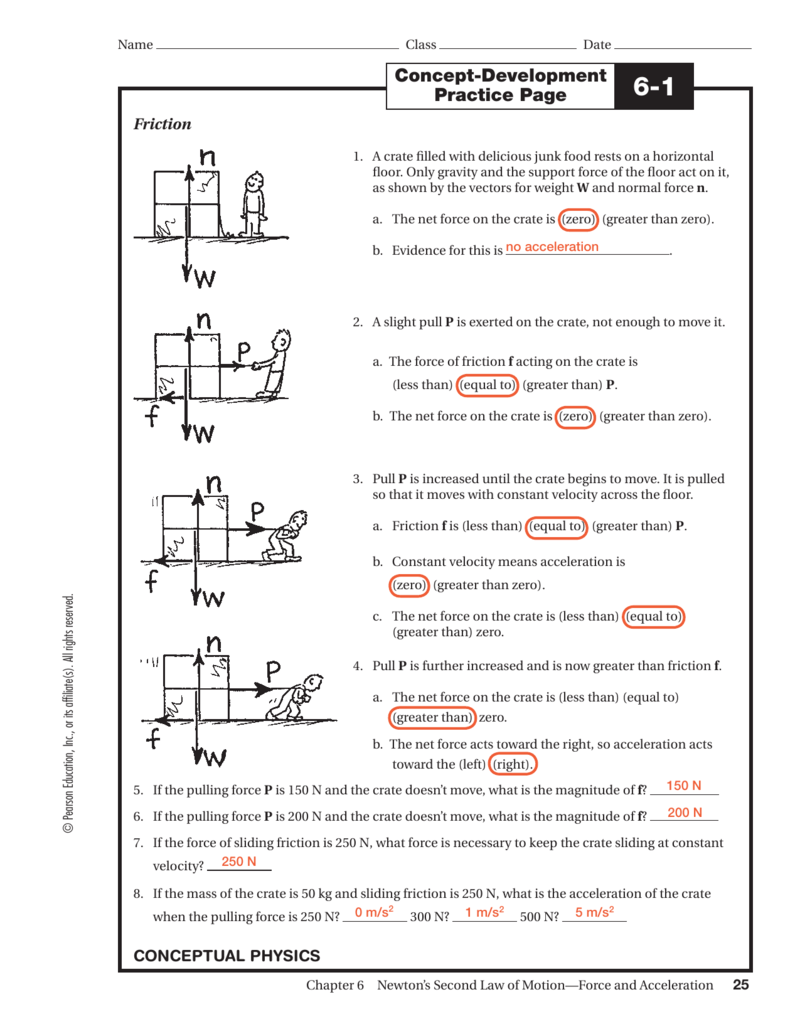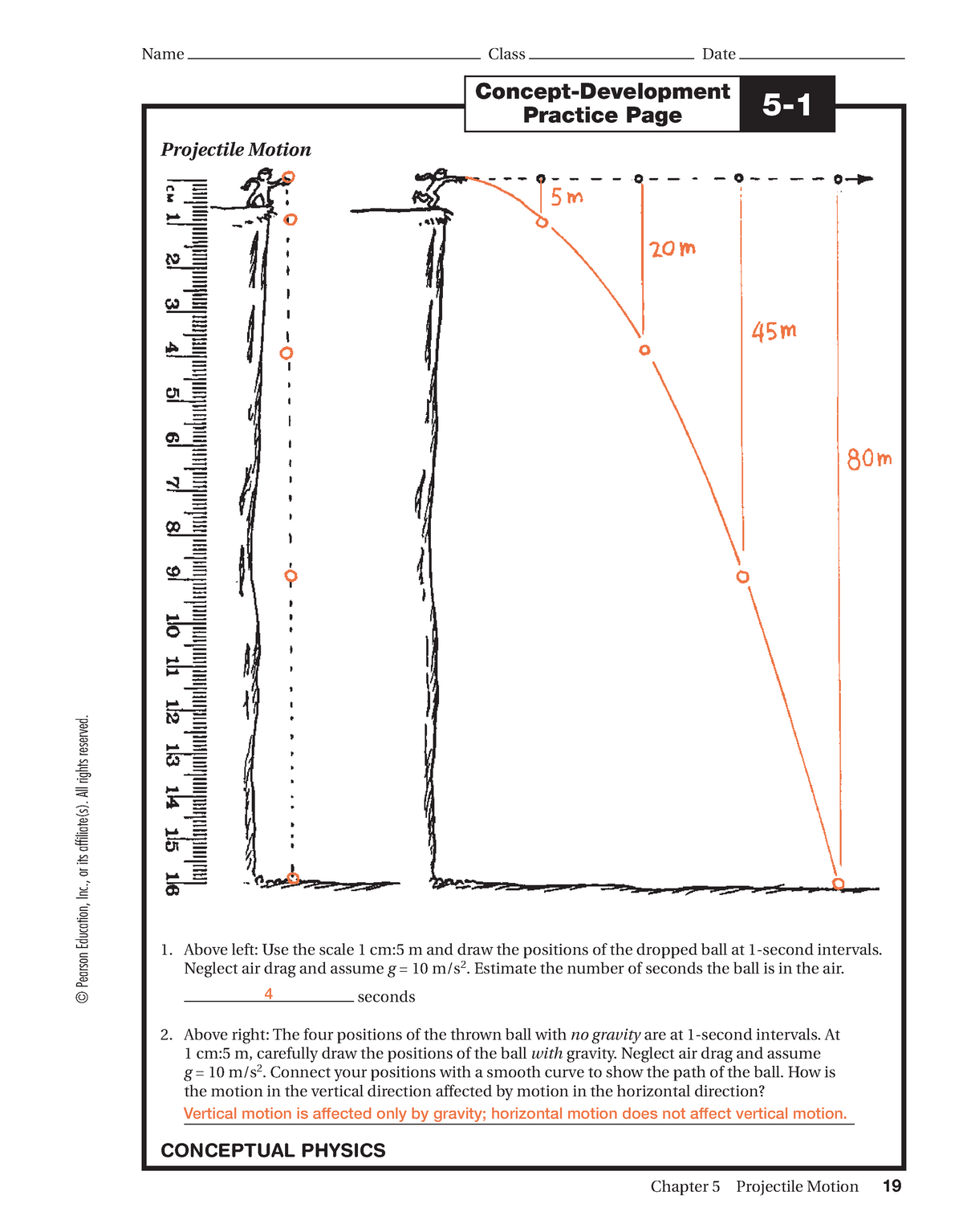Concept Development Practice Page 5 3
Concept Development Practice Page 5 3 - There is (friction) (no friction). The block is at rest on a horizontal surface. The normal support force n is equal and opposite to weight w. How much work (energy) is needed to lift an object that weighs 200 n to a height of 4 m? When two vectors a and b are at an angle to each other, they add to produce the resultant c by the parallelogram rule. Neglect air drag and assume g = 10 m/s2. What is the power output of an.
How much work (energy) is needed to lift an object that weighs 200 n to a height of 4 m? Neglect air drag and assume g = 10 m/s2. The block is at rest on a horizontal surface. The normal support force n is equal and opposite to weight w. There is (friction) (no friction). When two vectors a and b are at an angle to each other, they add to produce the resultant c by the parallelogram rule. What is the power output of an.
What is the power output of an. There is (friction) (no friction). The block is at rest on a horizontal surface. Neglect air drag and assume g = 10 m/s2. The normal support force n is equal and opposite to weight w. How much work (energy) is needed to lift an object that weighs 200 n to a height of 4 m? When two vectors a and b are at an angle to each other, they add to produce the resultant c by the parallelogram rule.
Conceptual Physics Free Fall Worksheet Answers Ameise Live
When two vectors a and b are at an angle to each other, they add to produce the resultant c by the parallelogram rule. The block is at rest on a horizontal surface. What is the power output of an. Neglect air drag and assume g = 10 m/s2. The normal support force n is equal and opposite to weight.
Planning and Development Practice 2984 Words Essay Example
The normal support force n is equal and opposite to weight w. How much work (energy) is needed to lift an object that weighs 200 n to a height of 4 m? When two vectors a and b are at an angle to each other, they add to produce the resultant c by the parallelogram rule. What is the power.
Conceptual Physics Worksheet Answers Mmosguides
What is the power output of an. The block is at rest on a horizontal surface. When two vectors a and b are at an angle to each other, they add to produce the resultant c by the parallelogram rule. Neglect air drag and assume g = 10 m/s2. The normal support force n is equal and opposite to weight.
Top Management Should Implement New Product Development Strategies
When two vectors a and b are at an angle to each other, they add to produce the resultant c by the parallelogram rule. What is the power output of an. How much work (energy) is needed to lift an object that weighs 200 n to a height of 4 m? There is (friction) (no friction). The normal support force.
Conceptual Physics Net Force Worksheet Answers Master of
Neglect air drag and assume g = 10 m/s2. There is (friction) (no friction). The block is at rest on a horizontal surface. What is the power output of an. How much work (energy) is needed to lift an object that weighs 200 n to a height of 4 m?
Free Fall Concept and Development Practice Page YS 696 Raritan
When two vectors a and b are at an angle to each other, they add to produce the resultant c by the parallelogram rule. The normal support force n is equal and opposite to weight w. The block is at rest on a horizontal surface. What is the power output of an. Neglect air drag and assume g = 10.
(PDF) ConceptDevelopment 112 Practice Page · CONCEPTUAL PHYSICS
When two vectors a and b are at an angle to each other, they add to produce the resultant c by the parallelogram rule. Neglect air drag and assume g = 10 m/s2. How much work (energy) is needed to lift an object that weighs 200 n to a height of 4 m? The block is at rest on a.
Physics at Desert View High School Conceptual Collisions
The normal support force n is equal and opposite to weight w. How much work (energy) is needed to lift an object that weighs 200 n to a height of 4 m? Neglect air drag and assume g = 10 m/s2. The block is at rest on a horizontal surface. There is (friction) (no friction).
Concept Development
What is the power output of an. How much work (energy) is needed to lift an object that weighs 200 n to a height of 4 m? Neglect air drag and assume g = 10 m/s2. When two vectors a and b are at an angle to each other, they add to produce the resultant c by the parallelogram rule..
Refraction ConceptDevelopment Practice Page
The block is at rest on a horizontal surface. The normal support force n is equal and opposite to weight w. How much work (energy) is needed to lift an object that weighs 200 n to a height of 4 m? What is the power output of an. Neglect air drag and assume g = 10 m/s2.
The Normal Support Force N Is Equal And Opposite To Weight W.
What is the power output of an. The block is at rest on a horizontal surface. How much work (energy) is needed to lift an object that weighs 200 n to a height of 4 m? Neglect air drag and assume g = 10 m/s2.
There Is (Friction) (No Friction).
When two vectors a and b are at an angle to each other, they add to produce the resultant c by the parallelogram rule.








